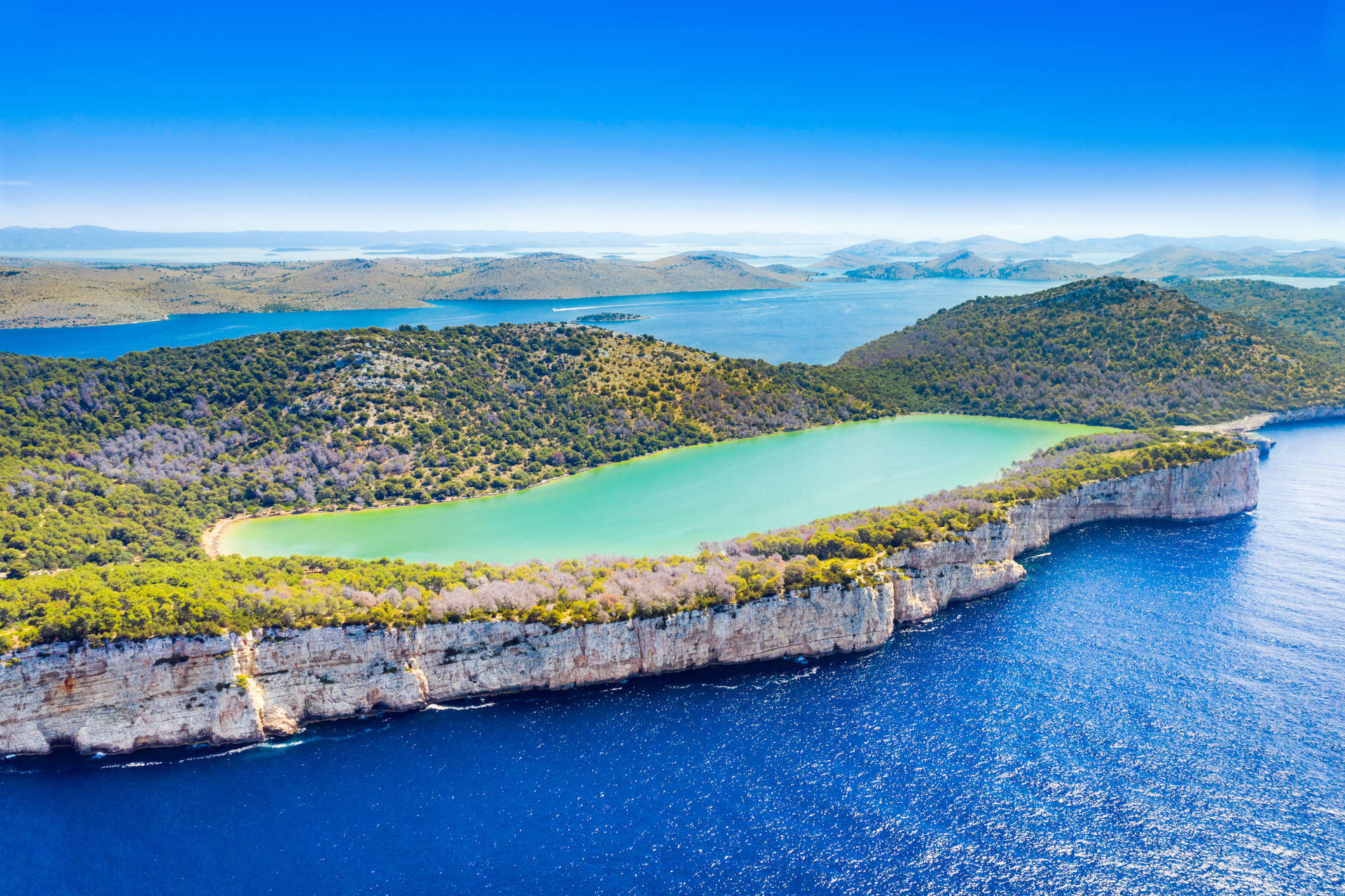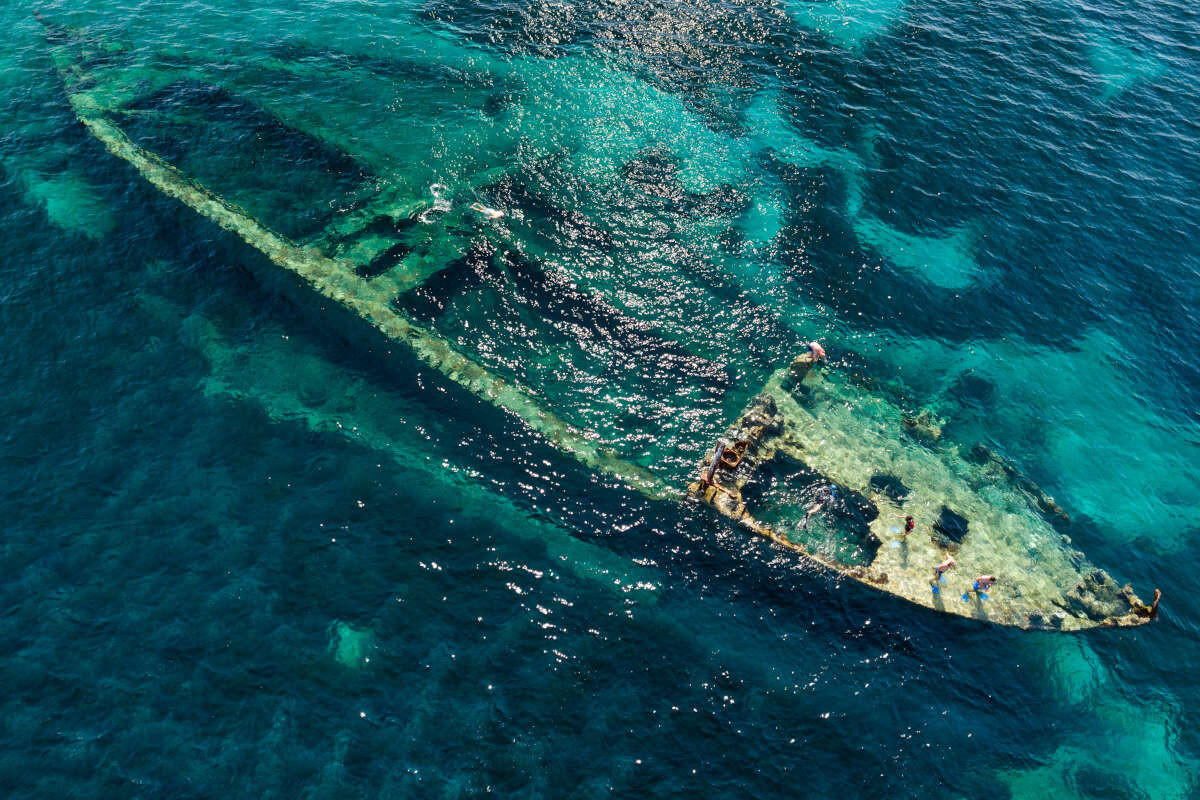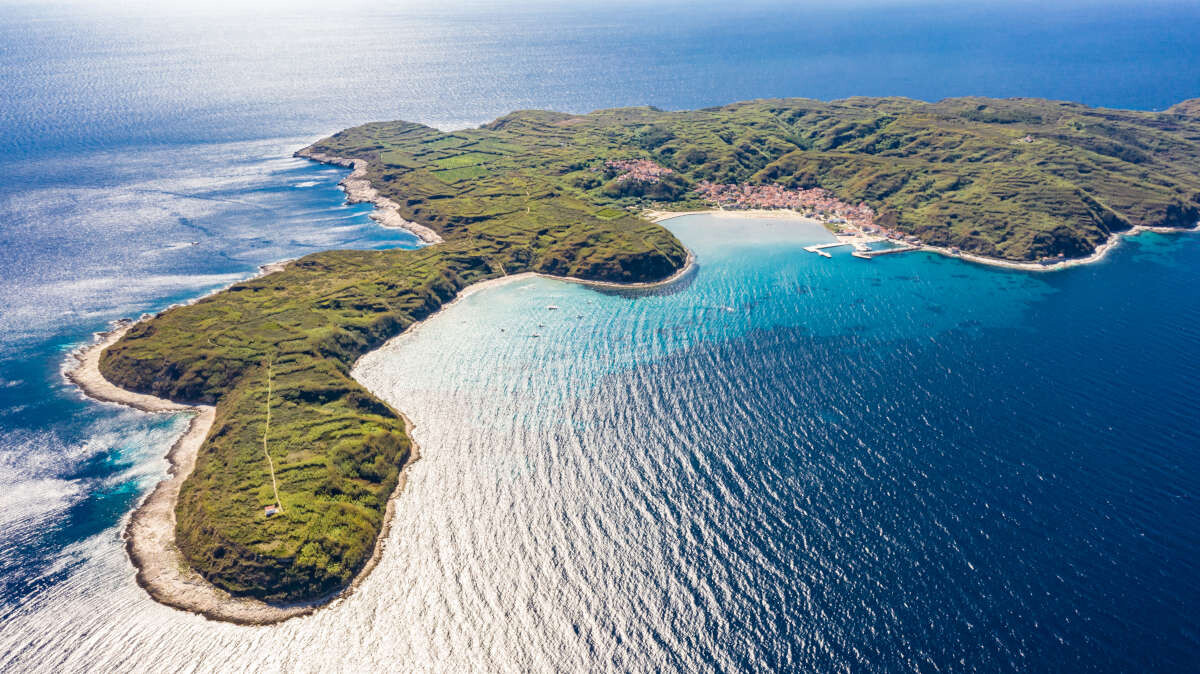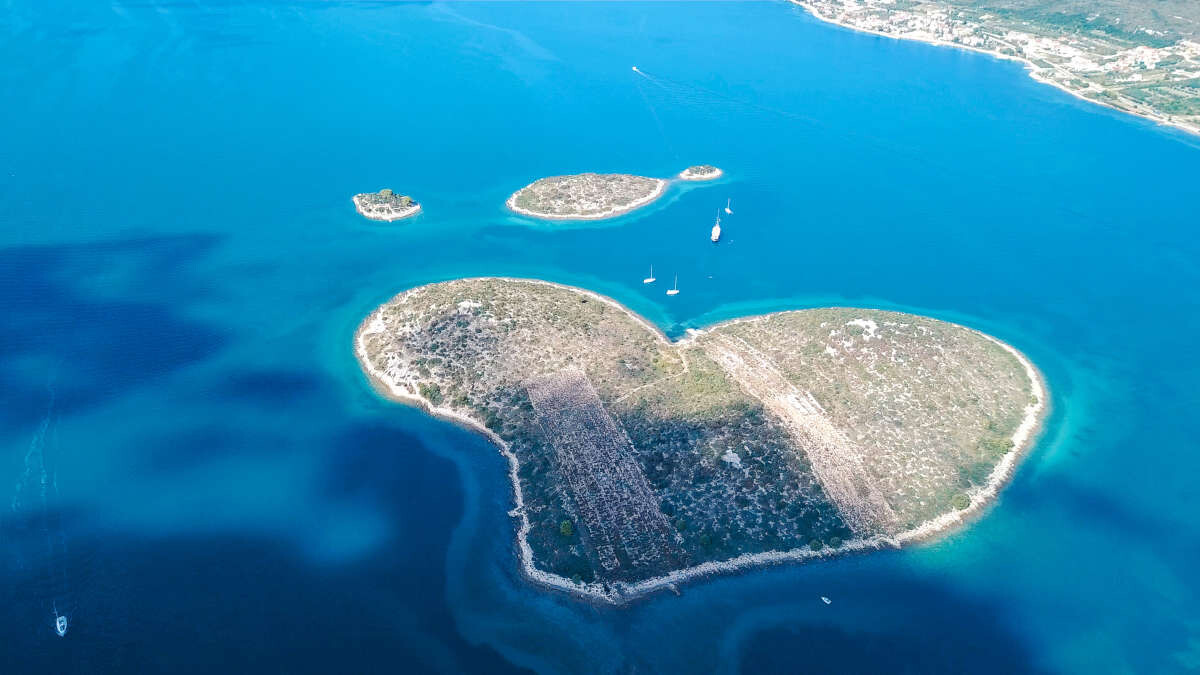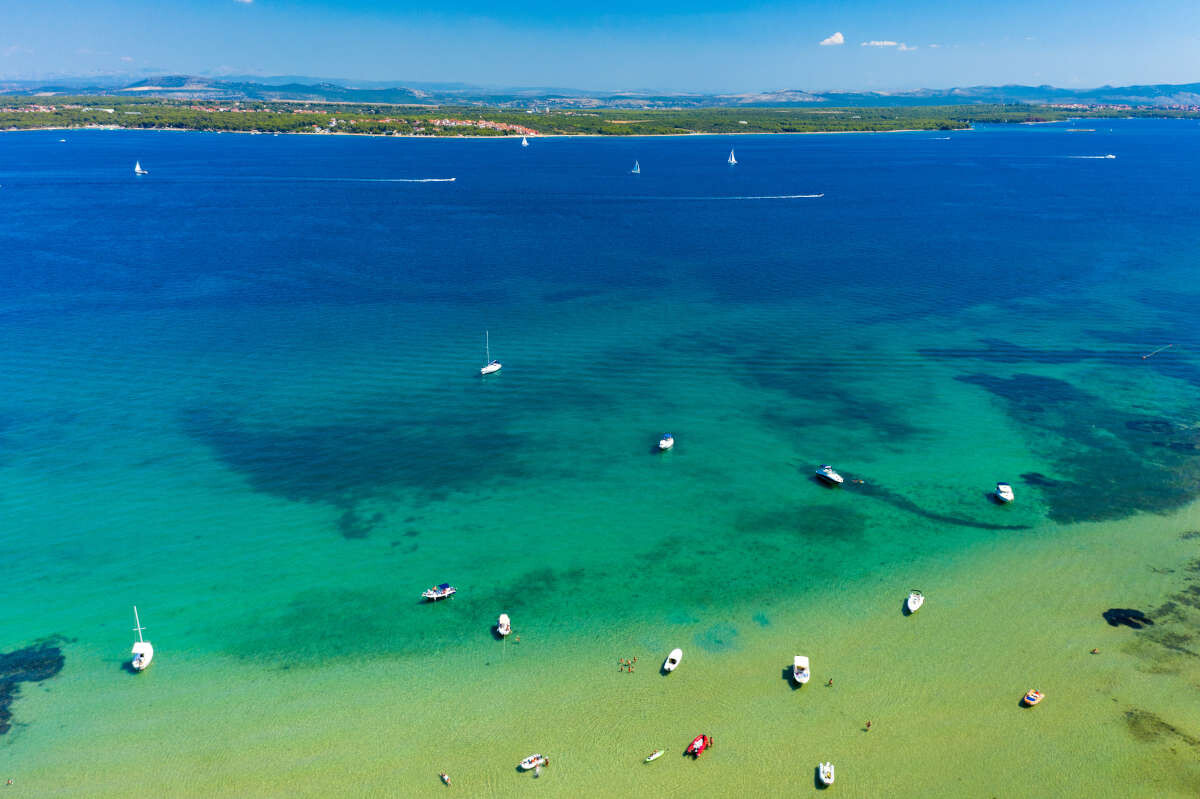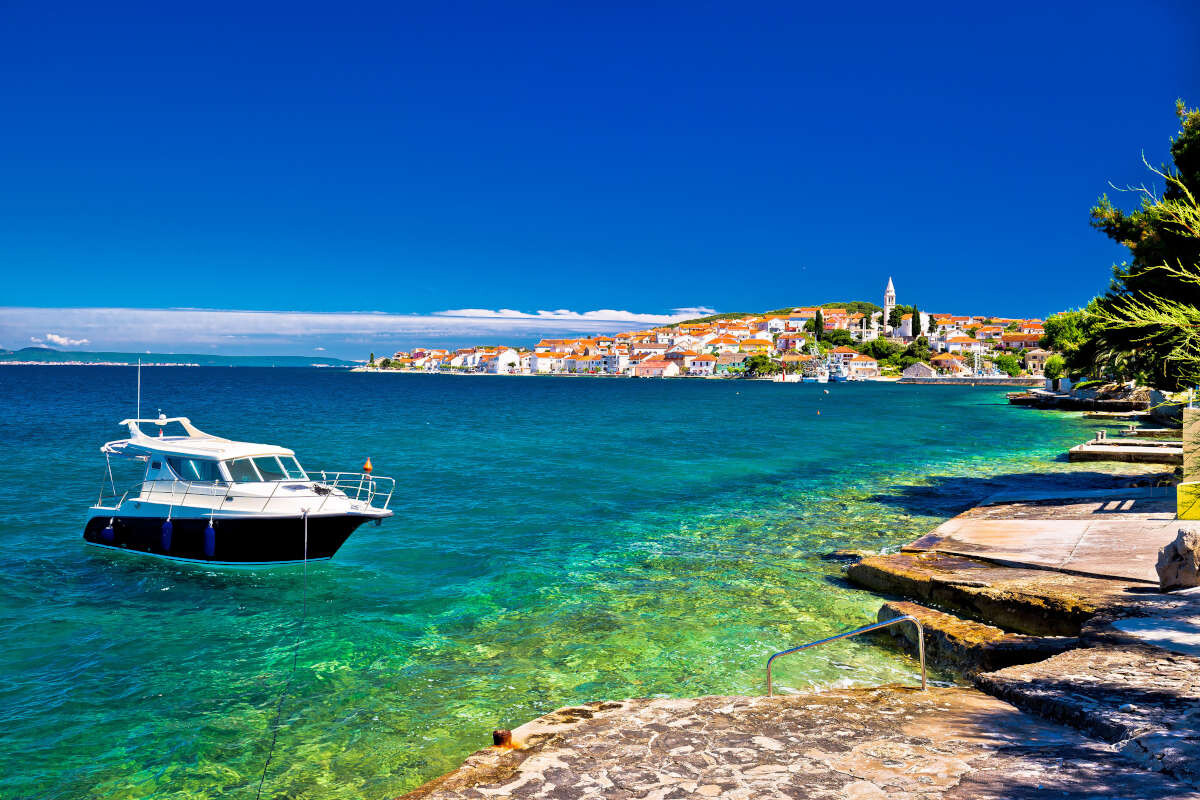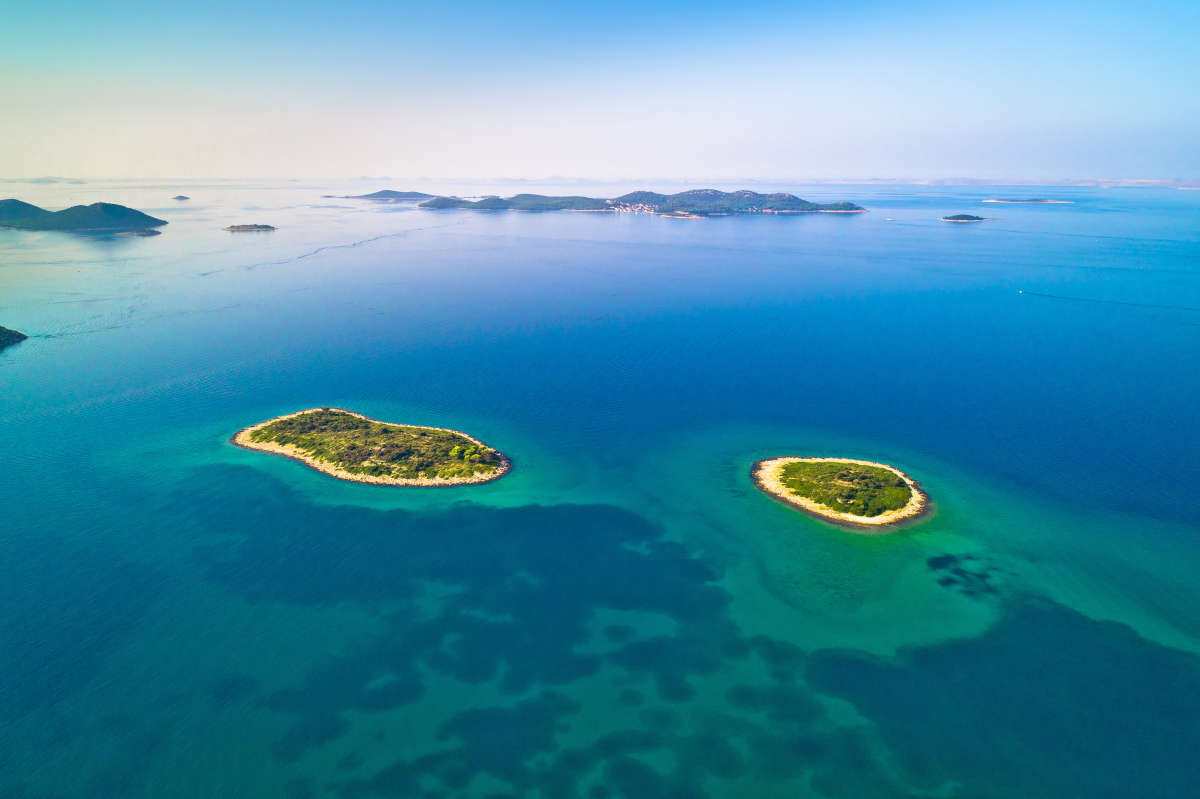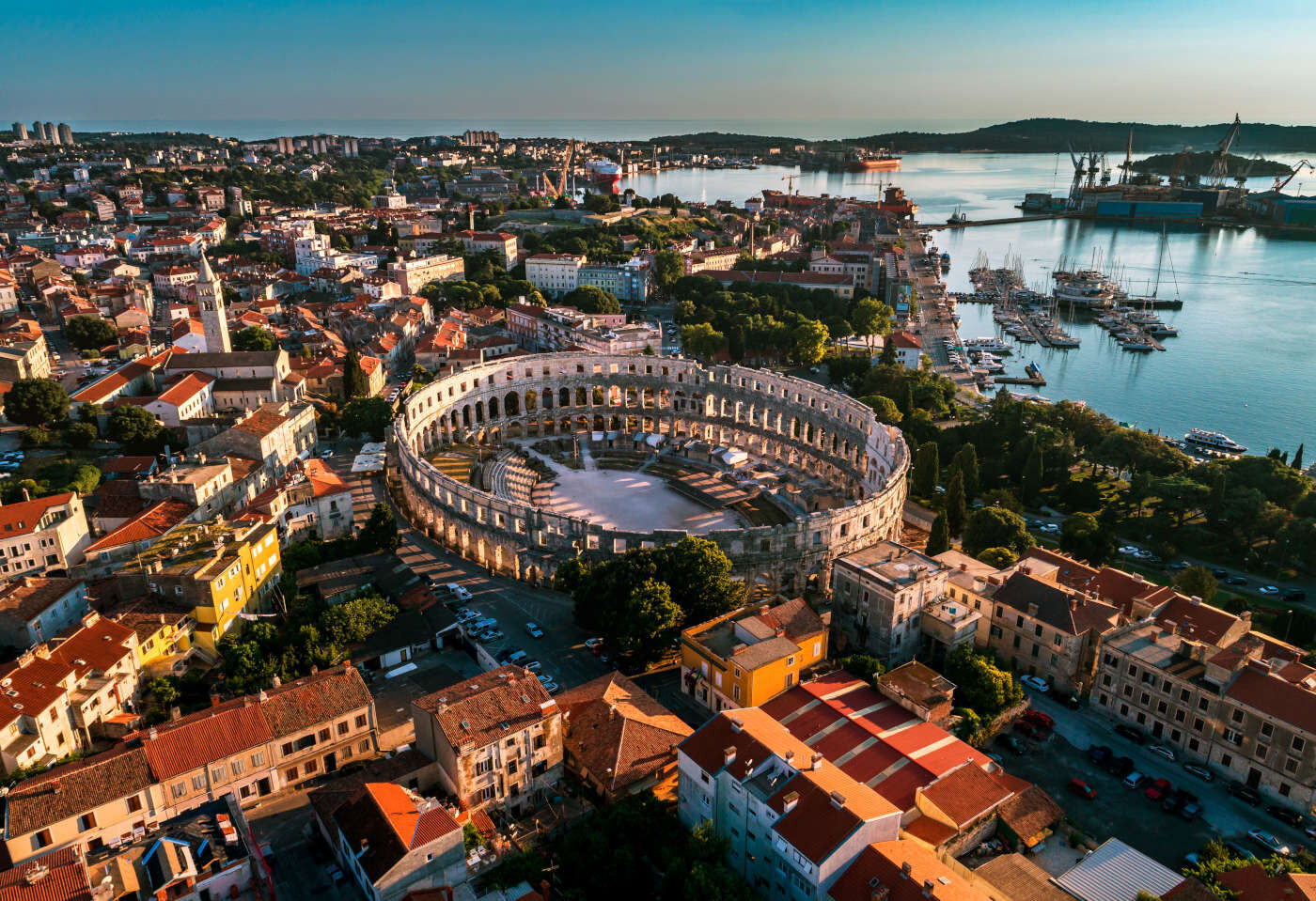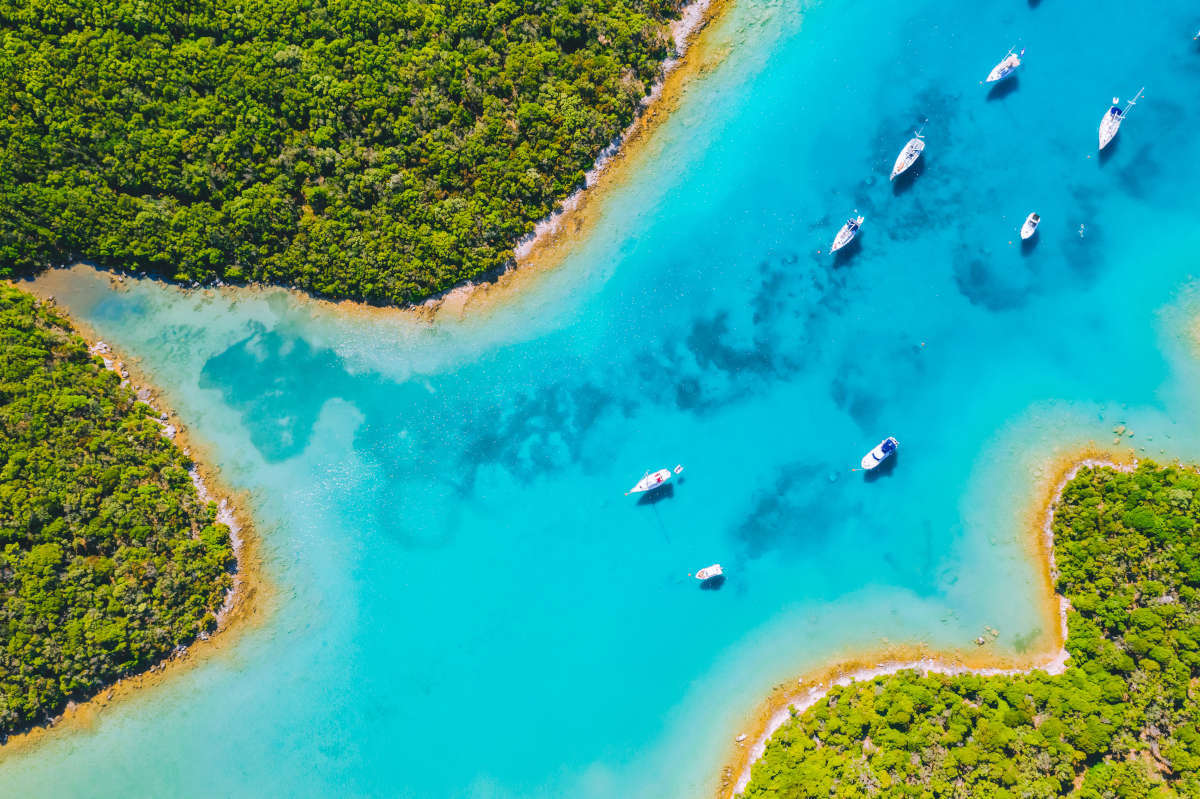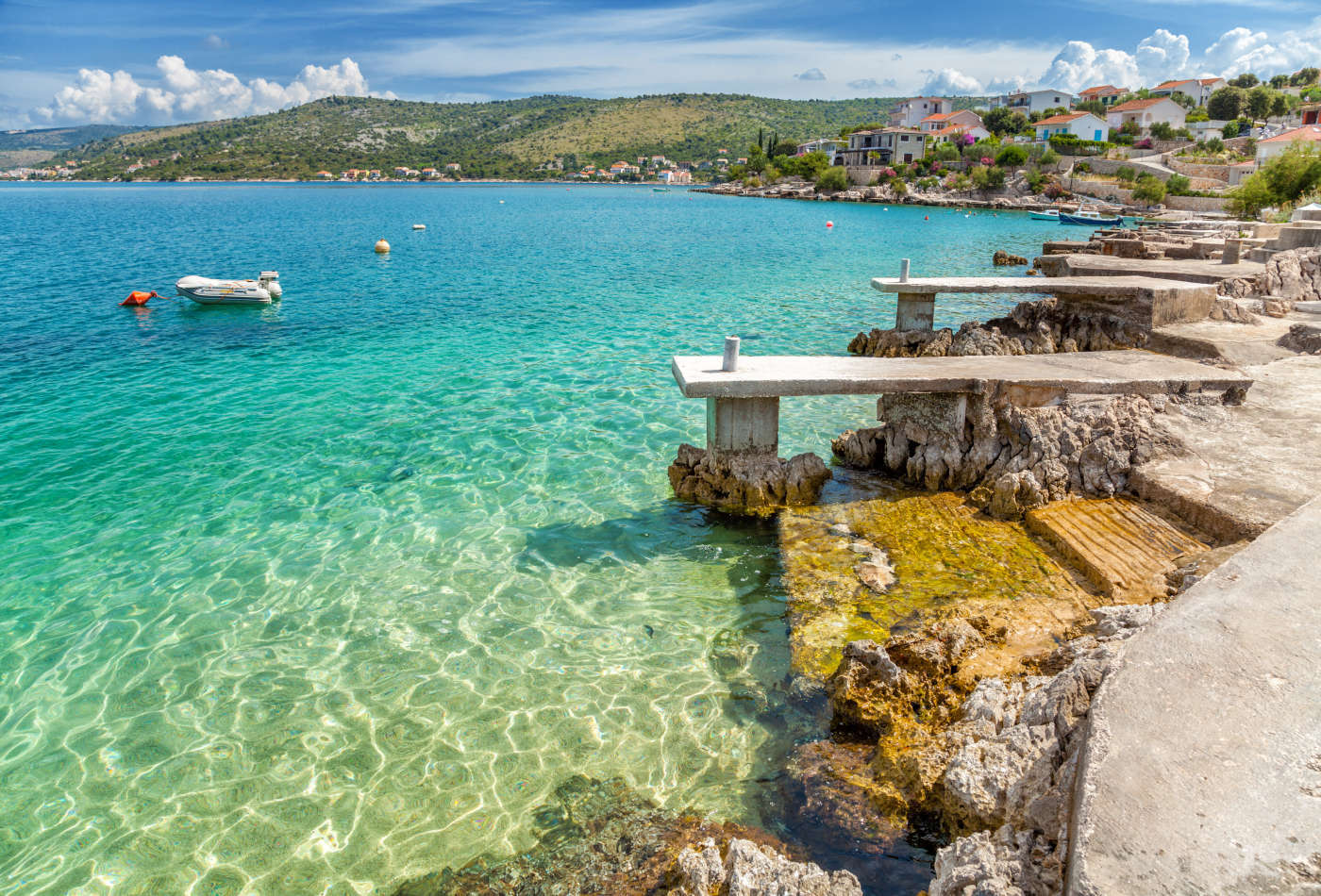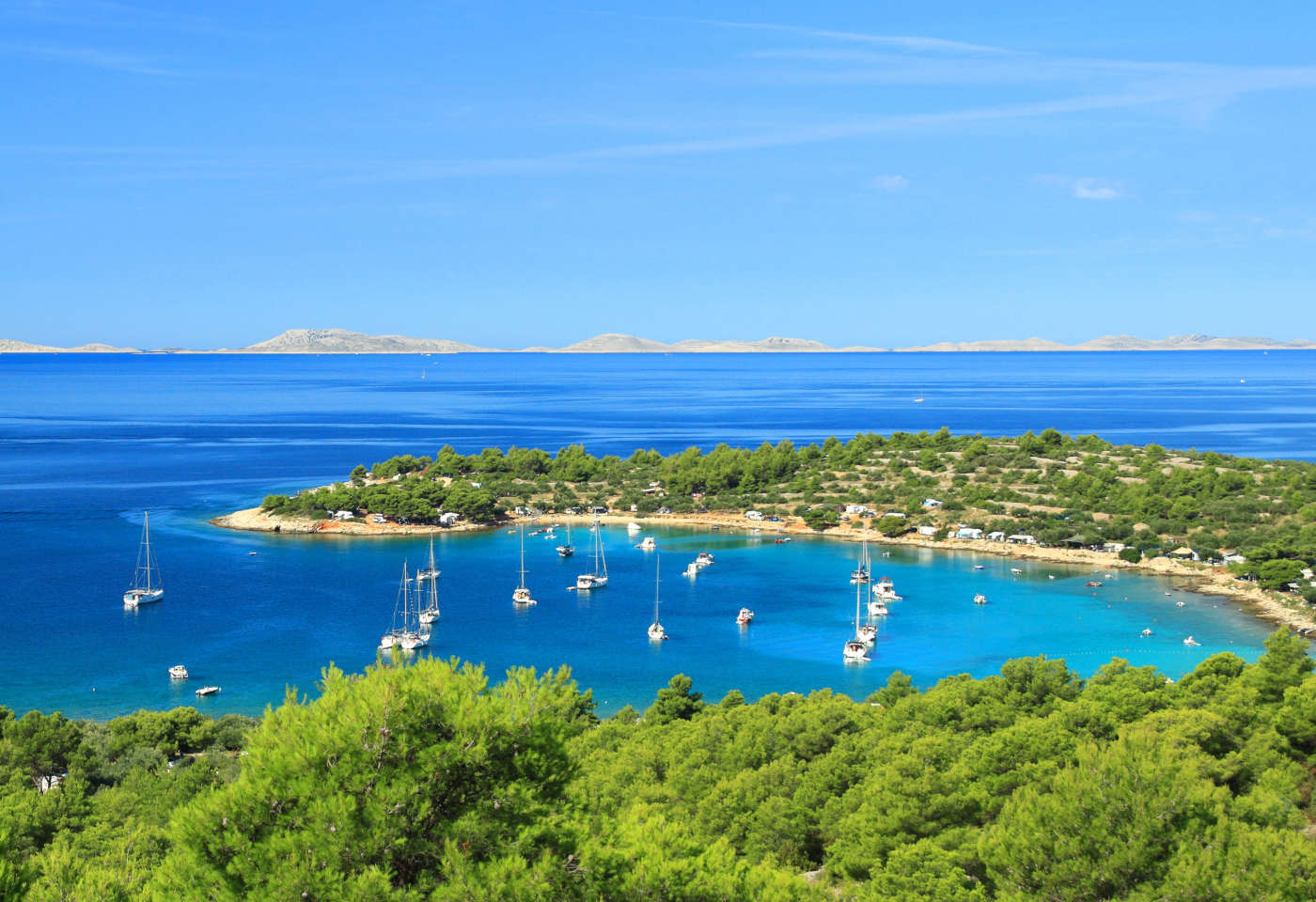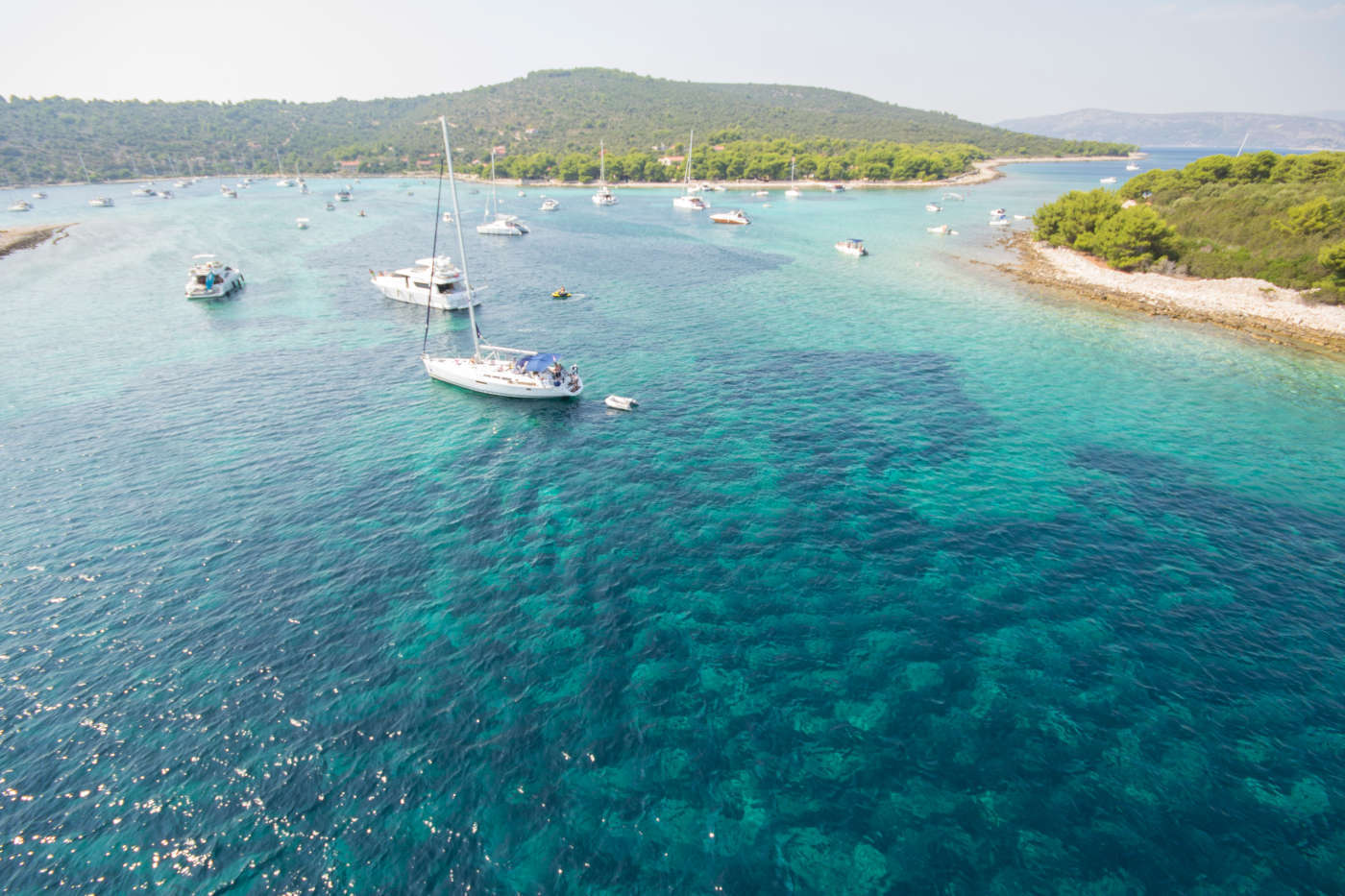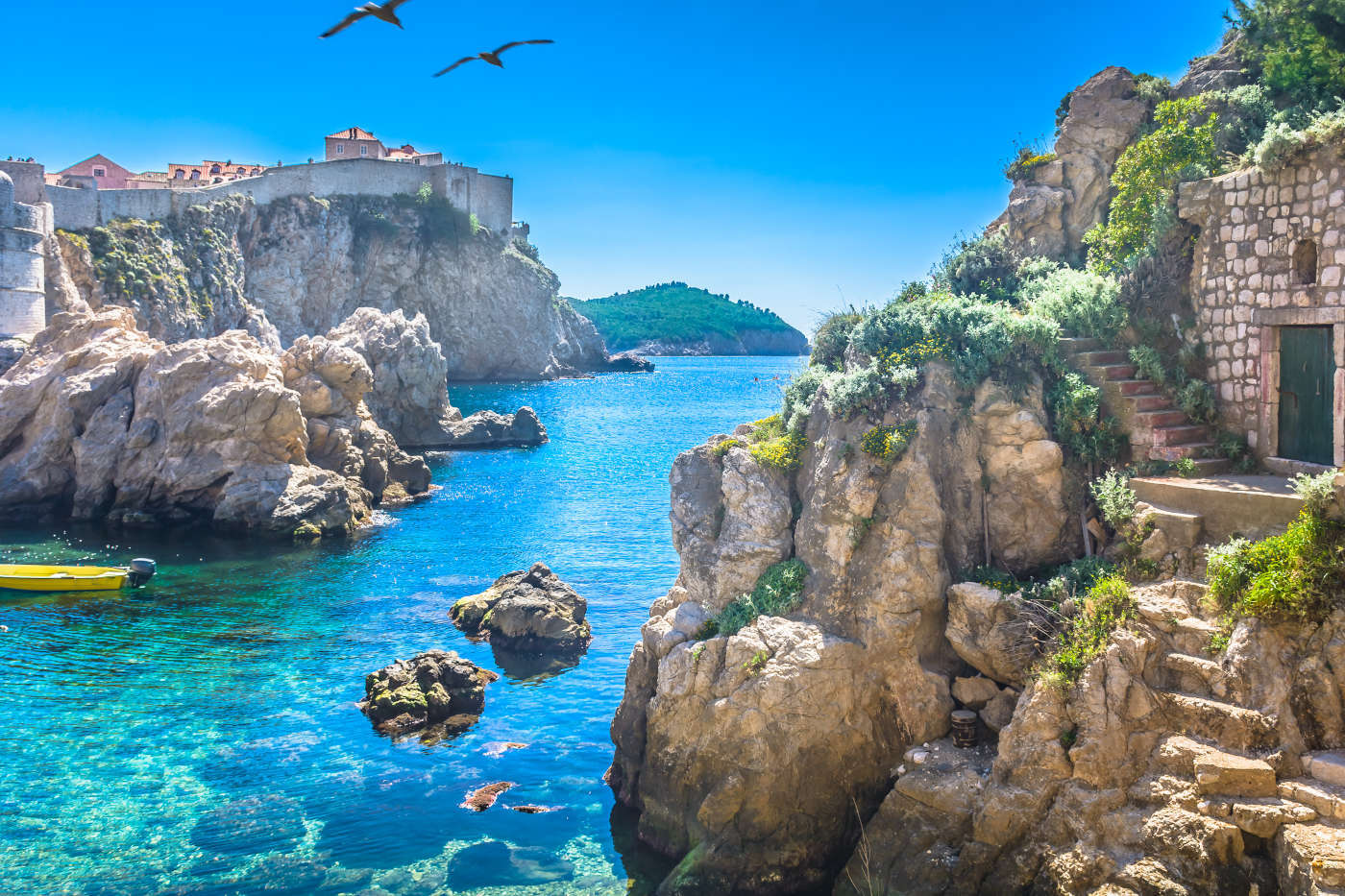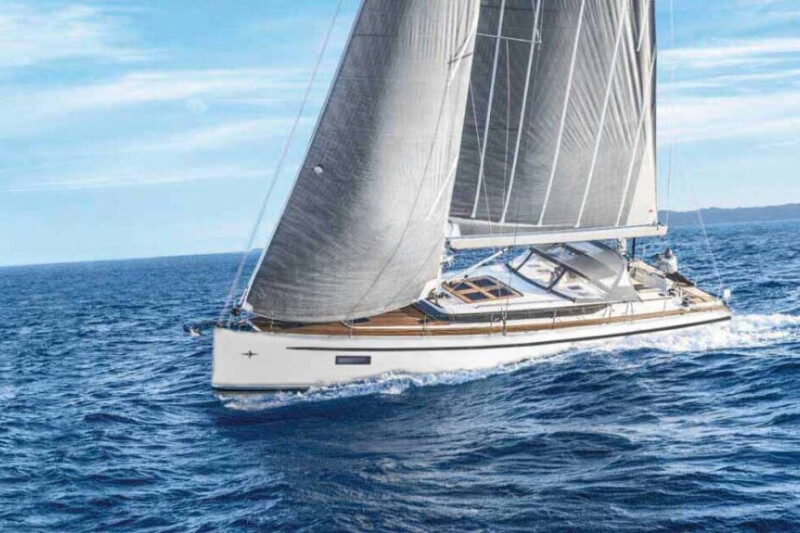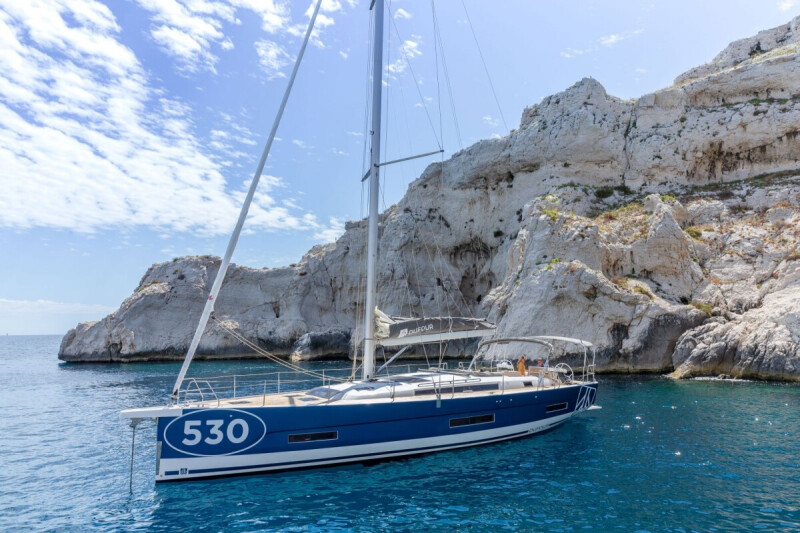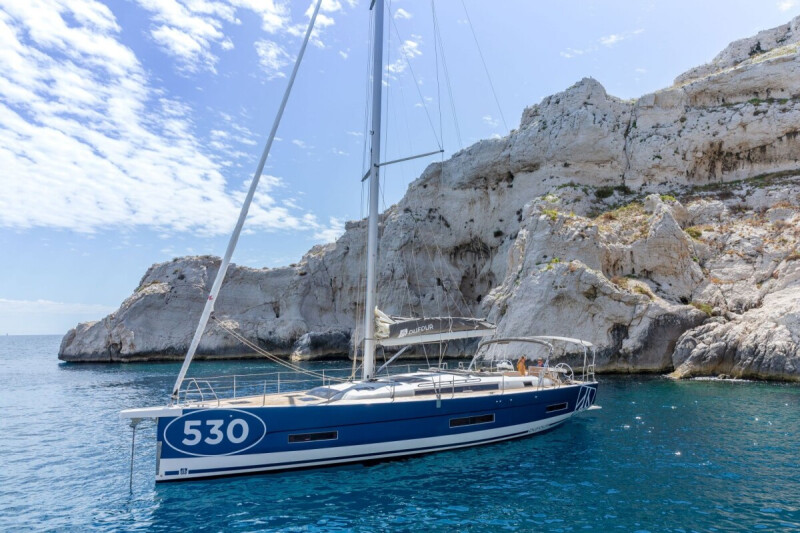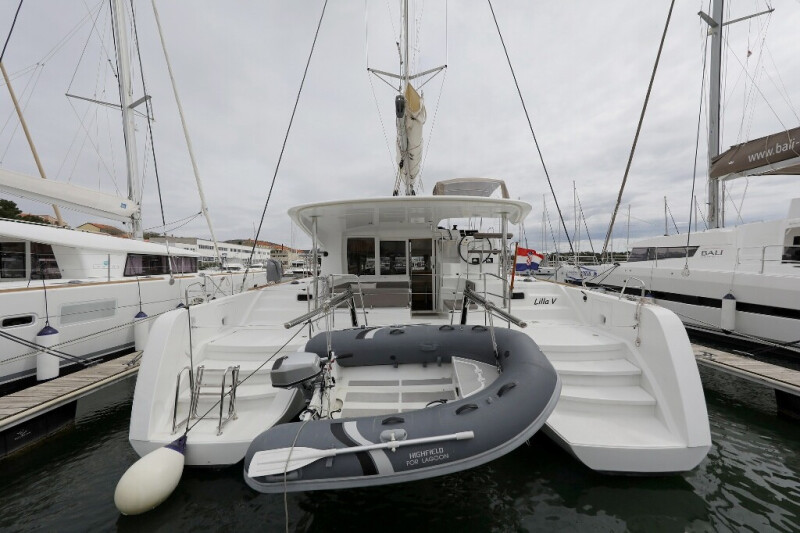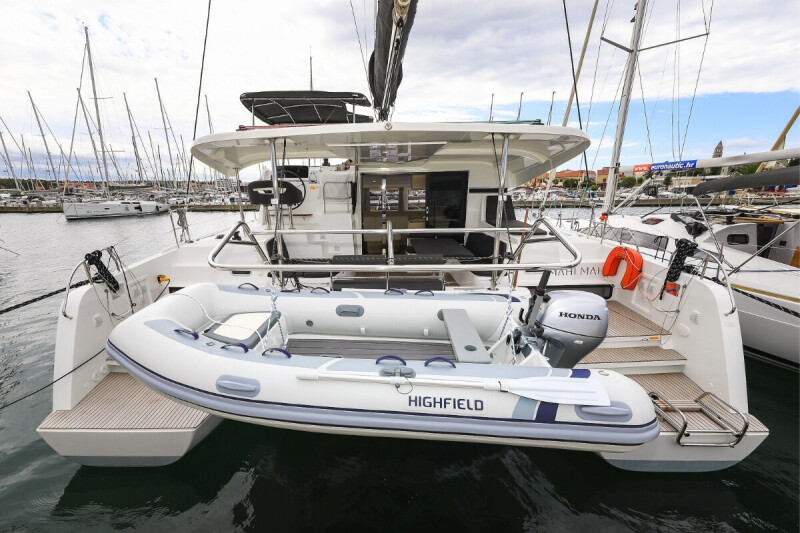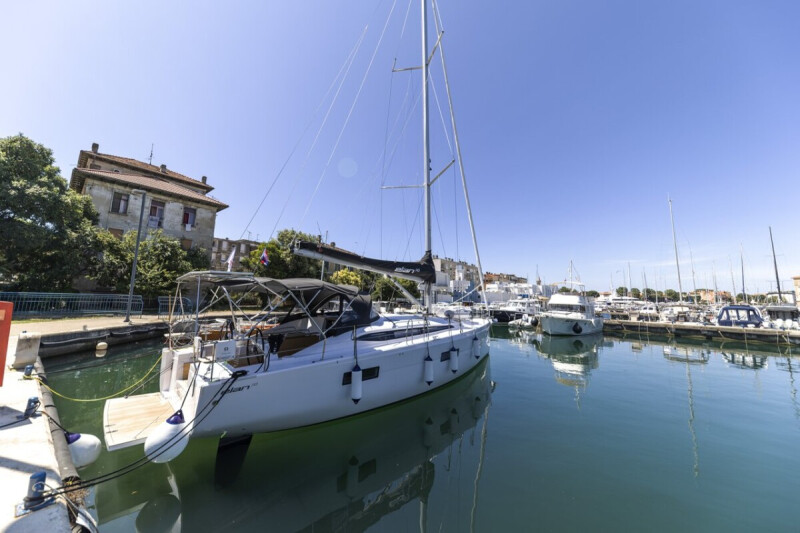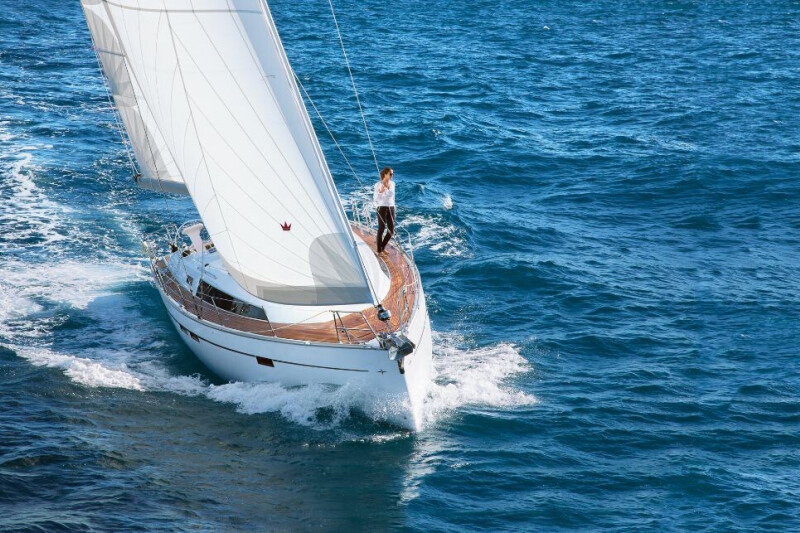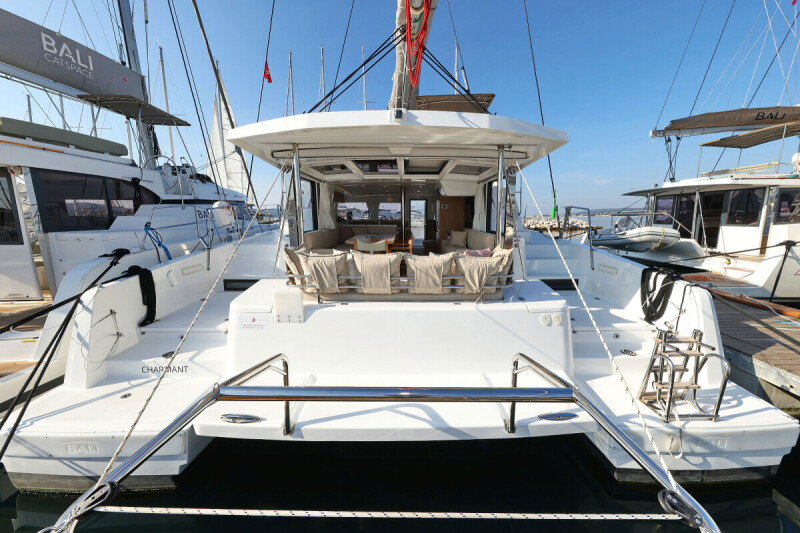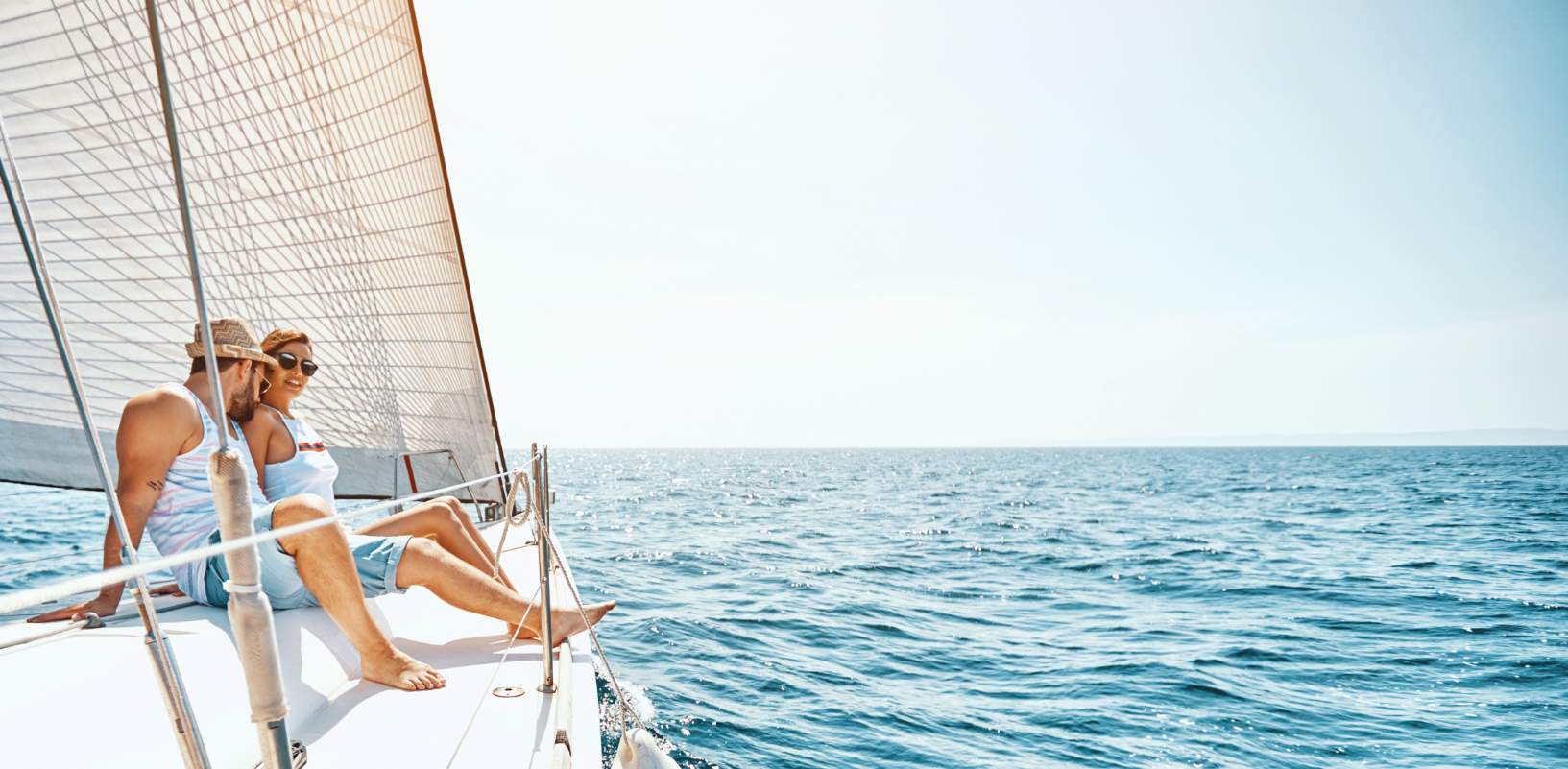The unspoilt nature with indented coast filled with many hidden bays and coves attract many sailors
Want to enjoy the sound of silence and dream to the music of the waves? There is still a little piece of paradise left in North Dalmatia, aka the Zadar region.
Zadar Region has always been the centre of tourism in the Dalmatian region. Reports say that almost half a million people visit Zadar every year. The main reason being its accessibility by air, sea and water.
Additionally, there are over 300 islands and islets around the coast of Zadar. Zadar region is also surrounded by four National parks: Kornati, Krka, Paklenica and Plitvice Lakes.
Zadar is also particularly famous among sailors. The unspoilt nature with indented coast filled with many hidden bays and coves attract many sailors, both experienced and beginners, for an island hopping adventure.
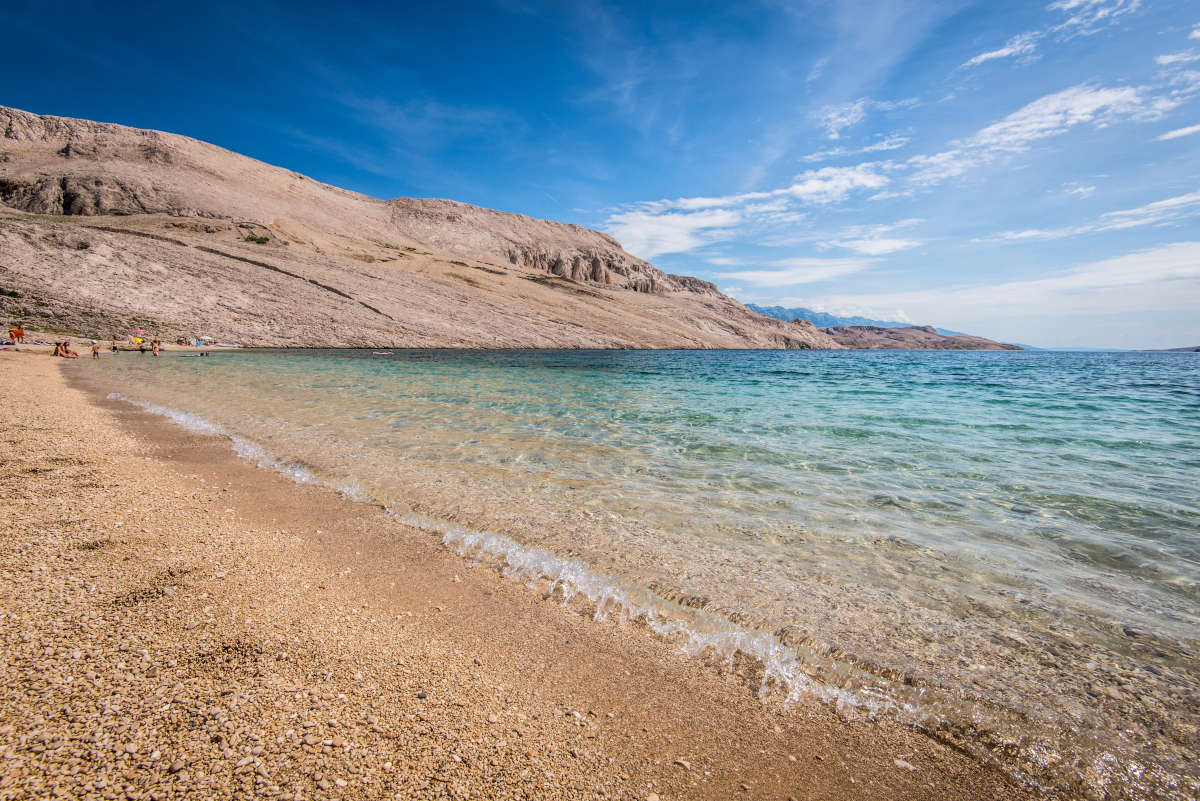
What’s the Weather Like in the Zadar Region?
Much like all of the Croatian Coast, the Dalmatian coast has a Mediterranean climate. Located in Northern Dalmatia, the Zadar region also experiences the same with short, warm, clear summers and long, cold, wet, windy winters.
There are almost little to no rain in summer, while the spring, fall and winter always experience rain of various intensity. While it can rain any time of the year, October and November are generally the wettest months, with total precipitation of 114 and 119 mm.
Zadar gets about 12 hours of sunshine per day in Summer. However, July and August are the hottest months of the year, with the average high temperature reaching 30℃.
Though winters are mild in Zadar, they can get excessively cold thanks to the Bora wind bringing air masses from the interior of the Balkan peninsula.
What's the Best Time to Visit Zadar?
The best time to visit Zadar is Spring and Summer. While the region flourishes in July and August, it is also packed back to back with tourists. The marinas are crowded with boats, and beaches full of bathers.
Experts recommend the shoulder season months of June and September. Not only is the weather nice, but also ideal for sailing. The winds are consistently strong enough for sailing. And the seawater temperatures are also suitable for a nice refreshing swim, not too cold.
Bays and Coves in the Zadar Region
The Zadar archipelago is home to numerous bays and coves, from sandy lagoons to pebbled beaches and crystal clear sea. The below bays offer safe anchorages for your sailing yacht charter, catamaran yacht charter or yacht charter Croatia.
- Brbinj - is a small peninsula that connects two bays on either side, Lučina bay to the North and Brbinj bay to the south. Both bays have a depth of 3-8 meters and are equipped with mooring buoys. Additionally, Ultra islet protects Lučina bay in the north.
- Zaporat - Situated to the northwest of the island Premuda is Masarine, an anchorage with 40 mooring buoys and a water depth of 2m.
- Port Sv. Ante - Port Sv. Ante on the island of Silba is famous for its sheltered location. Zapadnija, Sv. Ante and southern Porat together form port Sv. Ante with 30 buoys among them. If there are no buoys, you can anchor on the sandy bottom.
- Jazi Bay - To the east of Molat Island is Jazi, an anchorage well protected from the south winds and not so much in the North. While there is no mooring, it does have two piers for yacht charter Croatia with a draft less than 0.5 m. You can also anchor to the north of the bay, where the water depth is between 5-8m.
- Tovarnele - Tovarnele is a small port in the north of island Pag. There are six mooring buoys with water depths between 2-5m. The port is protected on all sides except the west side.
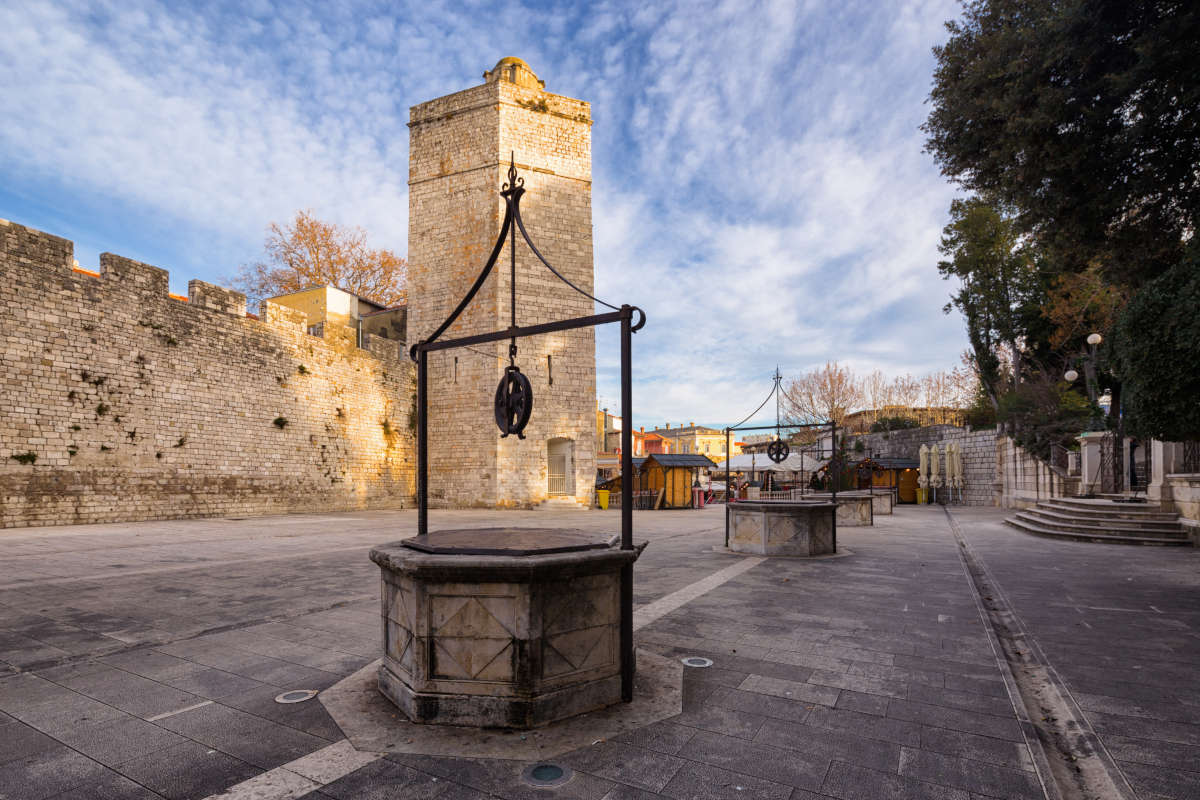
Tourist Destinations in Zadar
Zadar
Zadar is the second largest city in Dalmatia and one of the up-and-coming tourist destinations in the region. The coastal town is famous for its numerous historical buildings, including the magnificent cathedral and the Romanesque forum.
Zadar’s history dates back to the 9th century BC. The port town has changed hands quite a few times, including the Roman, Byzantium, Venetian and Austrian empires.
One of its most famous destinations is the Sea Organ which makes music as it comes into contact with the waves. The Old Town of Zadar, with its 3000-year history, was awarded “The Best European Destination” in 2016.
Right next to the sea organ is “The Greetings to the Sun”, created by the famous architect Nikola Bašić. It is a light construction which generates energy during the day and emits it at night as a fantastic light show.
Other tourist destinations include:
- Old Town of Zadar
- Cathedral of St. Anastasia
- Narodni Trg (People’s Square)
- Sv. Donat (Donatus Church) & Roman Forum
- Sea Organ
- Zadar Old Town and its Alleyways
- Riva – Waterfront Promenade
- Petar Zoranić Square
- Kopnena Vrata (The Land Gate)
- 5 Wells Square
- Monastery of St. Francis
- Museum of Church Art
- Glass Museum
Apart from being a cultural hotspot, the town of Zadar is also home to some of the most enchanting beaches in Croatia, like: Beach Borik, Beach Kolovare, Puntamika Beach and Punta Bajlo Beach
Zadar’s cuisine is quite a sophisticated affair. But, on the contrary, its restaurants are pretty casual and reasonably priced.
Konoba Skoblar, situated on Zadar's Five Wells Square, is the oldest in the city. They serve some of the best traditional fare especially grilled fish and seafood.
Another restaurant of mention is Bistro Kalelarga, a part of the Hotel Kalelargo. The establishment serves fresh, seasonal ingredients with a modern twist.
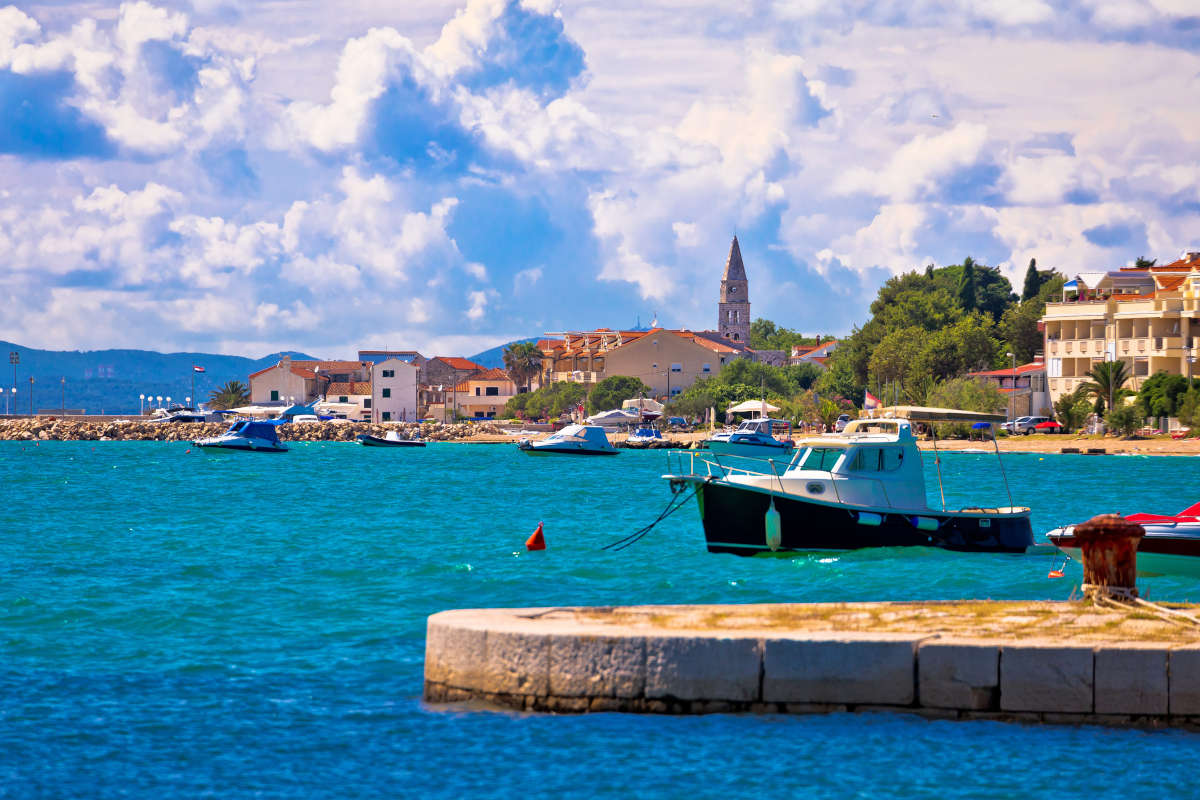
Biograd
Biograd is a famous resort town south of the Zadar region in Northern Dalmatia. Also known as the “White Town by the Sea”, Biograd is located between Pakostane and Sveti Filip I Jakov.
Biograd is home to picturesque bays and coves surrounded by dense pine forests. Another highlight of the town is its historic old town with the waterfront promenade.
As pretty as Biograd is, it serves mainly as a starting point to other destinations, namely, Kornati Islands National Park, Telascica Nature Park, Galesnjak island and Pasman Island. In addition, you can tour the watery beauty of the Vransko Lake, the largest lake in Croatia.
Being a famous resort town, Biograd is surrounded by numerous beaches (stone, pebble and sandy) with turquoise colours and an idyllic ambience.
- Drazica Beach
- Soline Beach
- Kumenat Beach
- Bosana Beach
Your trip to Biograd isn’t complete without visiting Konoba Kaciol, an old tavern that offers modern Dalmatian cuisine.
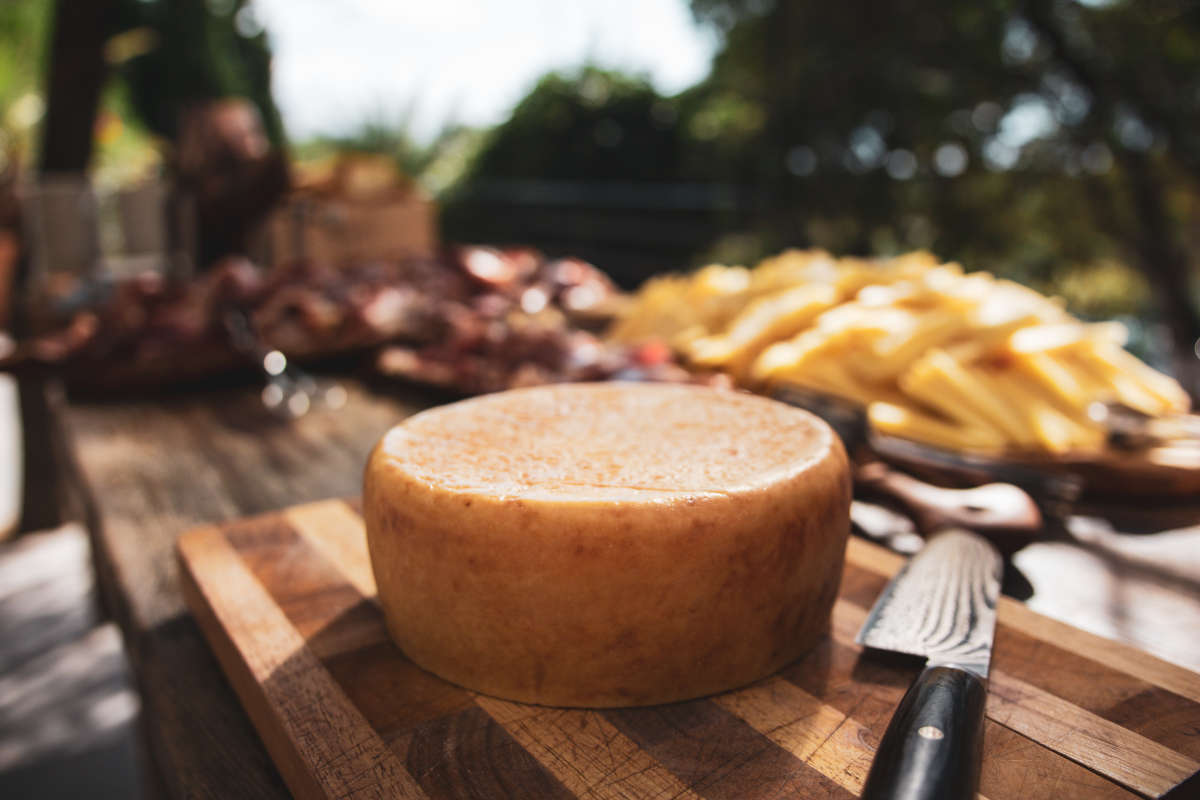
Pag
Pag has the reputation of being Croatia’s unusual island, with its pretty barren, almost strange landscape. Thanks to the strong Bura, there’s scant vegetation on the island. Despite this, the island is charming and rich in history.
Evidence suggests that Pag had settlements as far back as the stone age. In addition, the Illyrians were also present on the island in the 2nd century BC. Later on, it was also under the Roman and Venetian empires at various times.
The Pag town and Novalja are the two main towns on the island, with two completely different cultures. Pag town is still steeped in history and is famous for its Lace and Cheese. On the other hand, Novalja is renowned for its sizzling nightlife.
Being an island, there are plenty of shallow bays and coves all along Pag’s jagged coastline.
- Čista beach
- Simuni Beach
- Ručica pebble beach
- Beach Jadra
- Boyani Beach
- Zrće beach
With several restaurants, a beach bar, and a night club Zrce beach is also a famous party destination.
Despite its salty arid environment, Pag island has a thriving restaurant scene, albeit a smaller one. No trip to the island is complete without sampling their pungent cheese and lamb flavoured with the salty grass and herbs that sheep consume.
Na Take overlooking the bay, and Konoba Bile, a little stone-walled cellar, just completes your culinary experience.
Premuda
Premuda is a small island situated in North Dalmatia. Covered with low vegetation, mainly olive and holm trees, the island is a favourite among sailors.
Premuda is also a go-to place for divers, thanks to the wreckage of SMS Szent István, belonging to the Austro-Hungarian Navy. Discovered in the mid-1970s, it is currently a protected site.
One of the highlights of the island is the underwater cave system fondly called the “Cathedral”.
Apart from that, there’s nothing much on the island itself. Premuda is the epitome of idyllic island life with stone houses, bougainvillaeas, oleanders, olive trees and fig trees.
The sleepy island is home to some of the more interesting beaches, including Zad crikve and Uvala Siroka.
Fewer tourists, peaceful life and picturesque beaches have attracted many tourists in Summer and Spring.
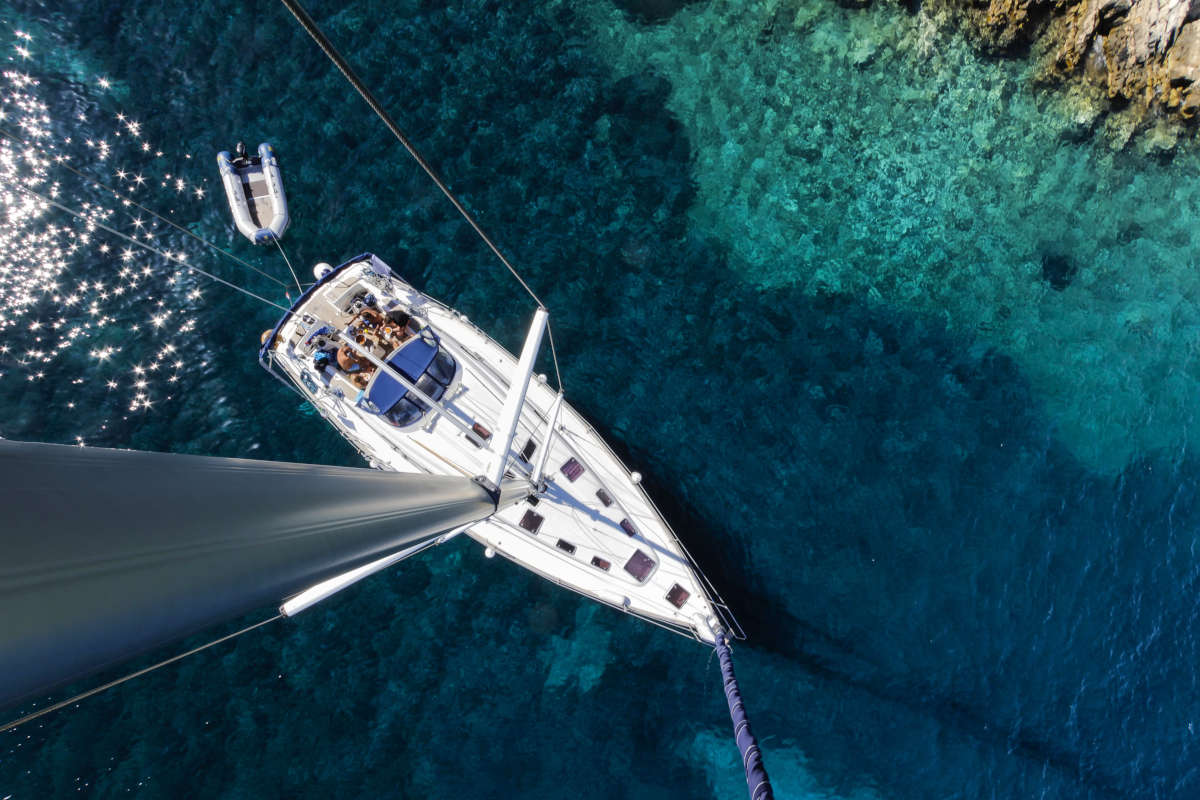
Silba
Silba is a small forest island located southwest of the Island of Losinj. The 15 sq. kilometres long island is pedestrianised without any traffic.
The main attraction on the island is Toreta, The Tower of Love. It is a small tower with a spiral staircase and an observational deck at the top, offering some of the best views of Silba and its landscape.
Another highlight of the island is the underwater museum, where visitors learn about the island's first inhabitants. Other destinations of attractions are Gallery of Marija Ujevic-Galetovic and The Local Committee.
The coastline of Silba is home to stunning sandy, pebbly or rocky beaches. The island's clear turquoise waters are considered the cleanest in all of Adriatic.
Silba being small, only a handful of restaurants offer traditional Dalmatian cuisine and fresh seafood. However, Konoba Mul, on the island's North shore, provides a wide variety of seafood along with some meat and vegetables.
Olib
Olib is a small island 30 NM northwest of Zadar and east of Silba. Much like the other islands in the Adriatic sea, fresh water is scarce on the island. However, an undersea pipeline brings fresh water to the island.
The island of Olib is famous for its olive oil, local wine and cheese. Olib cheese is said to be much better than its Pag counterpart.
The island is rich in history dating back to the 10th century when the Romans first inhabited it. The cove of Banve still bears the remnants of the Roman settlements.
There are many historical buildings and churches on the island, along with archaeological sites (open to visitors), like Parish Church Assumption of Mary, The 17th Century Tower “Kastel.”, Chapel of Saint Nikola, The ruins of St. Pauls and the Monastery, Church of Sv. Rok and The “new” St. Mary Church.
Olib is home to some of the most beautiful beaches on the Adriatic sea. It also has numerous shallow bays and hidden coves where you can anchor your yacht charter Zadar and have a refreshing swim.
- Slatinica Bay
- Baia Slatina Beach
- St. Nicholas Bay
Ist
Ist is a small island measuring 10 SqKm situated at the end of the Zadar archipelago. The butterfly-shaped island is a favourite among nature lovers and sailors alike.
The history of Ist dates to the 14th century. It is also said that the peaceful island had the biggest navy in Dalmatia in 1920.
The highlight of the island is the Straza peak, with magnificent views of the islands of Dugi Otok, Olib and Sigil.
There isn’t much to see on the island other than the beaches. Being a car-free island, it is perfect for those seeking a break from the outside world.
The coastline of Ist is also home to small coves and bays. Their sandy beaches are ideal for diving, snorkelling, and general nautical tourism. Also, thanks to the clean waters, there’s plenty of fish and sports fishing.
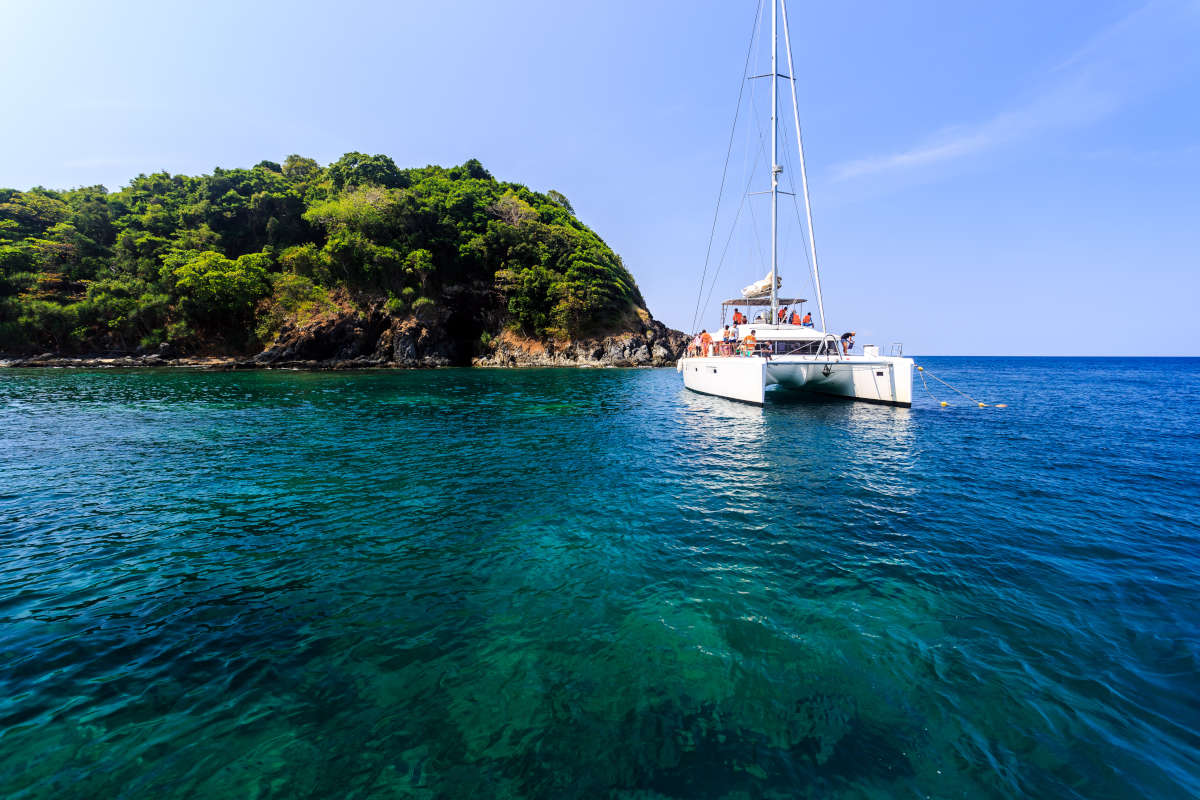
Molat
Molat is a 10 km long small island located in the northern part of the Zadar region. Otherwise called the Honey Island, the secluded island is famous among tourists looking for some downtime.
Molat is also great for hikers seeking challenges and ready for some island hopping.
Molat has a rich and vivid history dating back to the stone age when it was first inhabited. As per the documents retrieved from archaeological expeditions, the first mention of the island is from the 10th century BC.
Visitors can still witness the historical remains and artefacts from the past at Ledenik near Zapuntel. In addition, Zapuntel bay also has remnants of fortified settlements Gradina Lokardenik and Gradina Knezak dating from the iron age.
Brgulje is the main settlement on the island, along with Zapuntel and Molat.
Known for its dense pine forests, Molat is also home to some of the most beautiful beaches in the Adriatic sea. Crystal clear sea, unspoilt nature and sandy coastline attract tourists to the island.
To taste the island's gastronomy, visit Reataurant Pero in Zapuntel. Another restaurant worth visiting is Restaurant Papa.
Dugi Otok
Located in the Zadar archipelago, Dugi Otok is the largest island in Northern Dalmatia. Measuring 45 kilometres, the island is home to lush vegetation and natural scenery. It also has many idyllic beaches and hidden coves along its rugged coastline.
Dugi Otok is famous for its vineyards and orchards, extending from the Saharun beach north to the Telascica Nature Park south.
In addition to the picturesque coast and lush vegetation, Dugi Otok has many small fishing villages, 12 in total. Thanks to its many beaches, the island is rife with exciting activities from hiking, climbing, cycling, sailing, windsurfing and kayaking. For exploring wonderful nature, please do not miss Punta Bjanca Lighthouse, Telascica Nature Park, Fort Grpascak Viewpoint, Sali, St. Peregrine and the Shipwrights’ Cemetery in the Fishing Village of Savar or Villa Rusticae.
With crystal clear turquoise waters, white sand, and surrounded by pine trees, the beaches are Dugi Otok like no other.
Dugi Otok doesn't have a big restaurant scene, and hence the prices of the restaurants are pretty high compared to other parts of the country.
Marinov Magazin overlooking the harbour, is one of the top restaurants on the island. They serve some of the best Dalmatian cuisines at a higher price range.
For a budget meal, try Konoba Regula. It is famous for its fresh food, especially seafood.
Ugljan
Ugljan is an island situated in the Zadar region. Otherwise called The Green Island, the island is lush with Mediterranean vegetation, vineyards and olive trees.
While the North-Eastern part of the island is inhabited, the rest are primarily uninhabited with the steep landscape.
The history of Ugljan Island dates back to ancient times, at least 900 years in ancient times. Evidence of the same has been discovered in Zeljina’s Cave.
Of other architectual sights you can visit the 11th Century Church of St Cosmas and St Damian, the Ancient Christian Memorial (4th Century), the 14th Century St. Hippolytus and Cassian, the Church of the Assumption of the Blessed Virgin Mary, the 17th Century Califfi Castle, St Michael’s Fortress , the 15th Century Monastery of St. Jerome and/or Villa Rustica, the oldest Roman building.
Ugljan’s 20 km of indented coastline is home to beautiful beaches and hidden coves. Considering the secluded nature of the island, the beaches are mostly untouched, unpolluted and clean. You can enjoy this unique clear sea while visiting Luka Beach, Mostir Beach, Velika Sabusa, Jaz Beach or Batalaza Beach.
Though Ugljan isn’t big, it has quite a thriving restaurant scene offering the best local food, fresh seafood and Mediterranean vegetables. Konoba Udica and Konoba Ugljan serve some of the best Dalmatian cuisines with a simple traditional ambience.
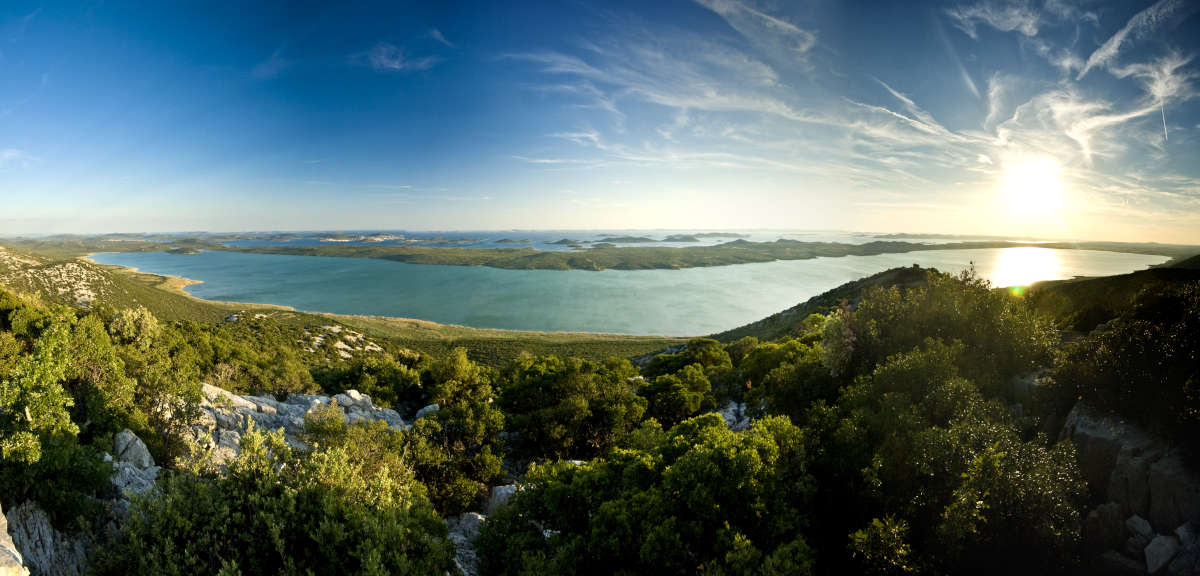
Pašman
Pašman is an island situated off the North Dalmatian coast. Measuring just 60 SqKm, the island has just 2800 people and more if it's summer.
The island's history dates back to the prehistoric period. However, archaeologists have unearthed several stone inscriptions and coins pertaining to the Roman period. In addition, you can also see remnants of Roman architecture all along the island like Franciscan Monastery and 14th Century Church, St Cosmas and Damian Monastery, Veliki Bokolj, Illyric town Gradine or Galesnjak island.
Though most of Dalmatia, if not Croatia, has pebbly beaches, the island of Pasman has been blessed with golden sandy beaches. They are also shallow, making them perfect for families with seniors and kids. Some of the beaches wirth visiting are: Tratica Beach, Duzica Beach, Lucina Beach, Mrljane Beach,Barotul Beach and Nevidane Beach.
Pasman cuisine is basically traditional Dalmatian with fresh fish, seasonal Mediterranean vegetables and olive oil. Dalmatian prosciutto dried on Bura, and Pag cheese are a speciality of the island.
Restaurant Tamaris serves the best Dalmatian cuisine. Lanterna Restaurant serves the best seafood, shellfish, and vegetables from their in-house eco garden.
Iž
The Island of Iž is one of the lesser known islands in Croatia, nested between the islands of Ugljan and Dugi Otok. There are two settlements on the island, Veli Iž and Mali Iž, with Veli Iž being the main settlement.
The history of the Iž has been inhabited since prehistoric times. You can even find traces of an Illyrian hillfort and Roman settlement.
With such a rich past, there are many historical buildings, churches and inscriptions on the island like the 11th Century Church of St. Mary, Church of Saint Ana, Church of the Ascension of Mary, Jama Porovac and Knez oil refinery.
Thanks to its picturesque beaches, Iz is famous among sailors and tourists. In addition, the island has numerous beaches suitable for swimming like Knez bay and Cove Vodenjak.
Konoba Diža in Komoseva, Restaurant Knez in Knez bay, and Konoba Kod Venka serve some of the best Dalmatian cuisines on the island.
